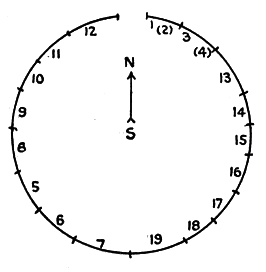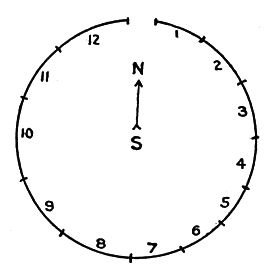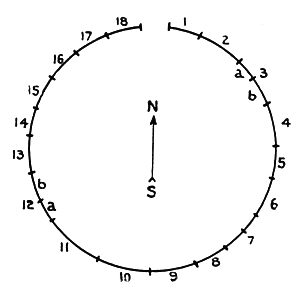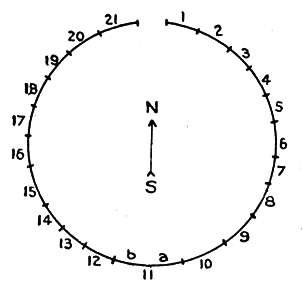| < GENERAL FEATURES OF ORGANIZATION | Main Contents | THE ASINIBOIN > |
THE DAKOTA TRIBES
DESIGNATION AND MODE OF CAMPING
The Dakota call themselves Otceti cakowiⁿ (Oćeti śakowiŋ1), The Seven Fireplaces or Council-fires. This designation refers to their original gentes, the Mdewakaⁿtoⁿwaⁿ (mdewakaŋ-toŋwaŋ), Waqpe-kute (Waḣpe-kute), Waqpe-toⁿwaⁿ(Wahpetoŋwaŋ), Sisitoⁿwaⁿ (Sisitoŋwaŋ), Ihañk-toⁿwaⁿ (Ihaŋktoŋwaŋ), Ihañk-toⁿwaⁿna (Ihaŋktoŋwaŋna), and Titoⁿwaⁿ (Titoŋwaŋ). They camped in two sets of concentric circles, one of four circles, consisting probably of the Mdewakaⁿtoⁿwaⁿ, Waqpe-kute, Waqpe-toⁿwaⁿ and Sisitoⁿwaⁿ; and the other of three circles, including the Ihañktoⁿwaⁿ, Ihañktoⁿwaⁿna, and Titoⁿwaⁿ, as shown by the dialectical resemblences and variations as well as by the relative positions of their former habitats.
THE MDEWAKAⁿTOⁿWAⁿ
The Mdewakaⁿtoⁿwaⁿ were so called from their former habitat, Mdewakaⁿ, or Mysterious lake, commonly called Spirit lake, one of the Mille Lacs in Minnesota. The whole name means Mysterious Lake village, and the term was used by De l'Isle as early as 1703. The Mdewakaⁿtoⁿwaⁿ were to the original Santee, but the white people, following the usage of the Ihañktoⁿwaⁿ, Ihañktoⁿwaⁿna and Titoⁿwaⁿ, now extend that name to the Waqpekute, Waqpe-toⁿwaⁿ and Sisitoⁿwaⁿ. The gentes of the Mdewakaⁿtoⁿwaⁿ are as follows:2
1. Kiyuksa, Breakers (of the law or custom); so called because members of this gens disregarded the marriage law by taking wives within the gens.
2. Qe-mini-tcaⁿ (Ḣe-mini-ćaŋ) or Qemnitca (Ḣemnića), literally, "Mountain-water-wood;" so called from a hill covered with timber that appears to rise out of the water. This was the gens of Red Wing, whose village was a short distance from Lake Pepin, Minnesota.
3. Kap‘oja (Kapoźa), Not encumbered-with-much-baggage; "Light Infantry." "Kaposia, or Little Crow's village," in Minnesota, in 1852.
4. Maxa-yute-cni (Maġa-yute-ṡni), Eats-no-geese.
5. Qeyata-otoⁿwe (Ḣeyata-otoŋwe), of-its-chief-Hake-wacte (Hake waṡte); Qeyata-toⁿwaⁿ (Heyata-toŋwaŋ) of Reverend A. L. Riggs, Village-back-from-the-river.
Back to reference
Back to reference
6. Oyate-citca (Oyate ṡića), Bad nation.
7. Tiⁿta-otoⁿwe (Tiŋta-otoŋwe), of Hake-wacte, or Tiⁿta toⁿwaⁿ (Tiŋta-toŋwaŋ) of A.L. Riggs, Village-on-the-prarie (tiŋta).
These seven gentes still exist, or did exist as late as 1880.
THE WAQPE-KUTE
The name waqpe-kute is derived from waqpe (waḣpe), leaf, and kute, to shoot at, and signifies Shooters-among-the-leaves, i. e., among the deciduous trees, as distinguished from Wazi-kute, Shooters-at-or-among-the-pines. The gentes exist, but their names have not been recorded.
THE WAQPE-TOⁿWAⁿ OR WAHPETON
The name of this people signifies Village-among-the-leaves (of deciduous trees), the gens being known to the whites as Leaf Village or Wahpeton. The gentes of this people, as given in 1884 by Reverend Edward Ashley, are the following:
13. Iⁿyaⁿ-tceyaka-atoⁿwaⁿ (Iŋyaŋ-ce-yaka-atoŋwaŋ), Village-at-the-dam or -rapids.
14. Takapsin-toⁿwaⁿna (Takaspin-toŋwaŋna), Village-at-the-shinny-ground.
15. Wiyaka-otina, Dwellers-on-the-sand (wiyaka).
16. Oteqi-atoⁿwaⁿ (Oteḣi-atoŋwaŋ), Village-on-the-river.
17. Wita-otina, Dwellers-on-the-island (wita).
18. Wakpa-atoⁿwaⁿ (Wakpa-atoŋwaŋ), Village-on-the-river.
19. Tcaⁿ-kaxa-otina (Ćan-kaġa-otina), Dwellers-in-the-log (-huts?).
The numbers prefixed to the names of these gentes denote their respective places in the camping circle of the Sisseton and Wahpeton, as shown in figure 30.
THE SISITONWAN OR SISSETON
It is evident that the Sisseton were formerly in seven divisions, the Wita-waziyata-otina and the Ohdihe being counted as one; the Basdetce-cni and Itokaq-tina as another; the Kaqmi-atoⁿwaⁿ, Maniti, and Keze as a third, and the Tizaptaⁿ and Okopeya as a fifth. When only a part of the tribe journeyed together, the people camped in the following manner: The Amdo-wapuskiyapi pitched their tents between the west and north, the Wita-waziyata-otina between the north and east, the Itokaq-tina between the east and south, and the Kap'oja between the south and west. The following are the Sisseton gentes (figure 31):
1. Wita-waziyata-otina, Village-at-the-north-island.
Page 217
2. Ohdihe (from ohdihaⁿ, to fall into an object endwise). This gens is an offshoot of the Wita-waziyata-otina.
3. Basdetce-cni. (Basdece-ṡni), Do-not-split (the body of a buffalo)-with-a-knife (but cut it up as they please).
4. Itokaq-tina (Itokaḣ-tina), Dwellers-at-the-south (itokaġa). These are an offshoot of the Basdetce-cni.
5. Kaqmi-atoⁿwaⁿ (Kaḣmi-atoŋwaŋ), Village-at-the-bend (kaḣmin).
6. Mani-ti, Those-who-camp (ti)-away-from-the-village. An offshoot of the Kaqmi-atoⁿwaⁿ.
7. Keze, Barbed-like-a-fishhook. An offshoot of the Kaqmi-atoⁿwaⁿ.
8. Tcaⁿ-kute (Ćaŋ kute), Shoot-in-the-woods (among the deciduous trees); a name of derision. These people, according to Ashley, resemble the Keze, whom he styles a "cross clan."
9. Ti-zaptaⁿ (Ti-zaptaŋ), Five-lodges.
10. Okopeya, In-danger. An offshoot of the Ti-zaptaⁿ.
11. Kap‘oja (Kapoźa), Those-who-travel-with-light-burdens. (See number 3 of the Mdewakaⁿtoⁿwaⁿ.)
12. Amdo-wapuskiyapi, Those-who-lay-meat-on-their-shoulders(amdo)-to-dry-it(wapusktya)-during-the-hunt.
THE IHAÑKTOⁿWAⁿ OR YANKTON
The Yankton and Yanktonai speak the Yankton dialect, which has many words in common with the Teton. In 1878 Walking Elk wrote the names of the Yankton gentes in the following order: 1, Tcaⁿ-kute (Ćaŋ kute), Shoot-in-the-woods; 2, Tcaxu (Ćaġu), Lights or lungs; 3, Wakmuha-oiⁿ (Wakmuha oiŋ), Pumpkin-rind-earring; 4, Ihaisdaye, Mouth-greasers; 5, Watceuⁿpa (Waćeuŋpa), Roasters; 6, Ikmuⁿ (Ikmuŋ), An animal of the cat kind (lynx, panther, or wildcat); 7, Oyate-citca (Oyate-ṡića), Bad-nation; 8, Wacitcuⁿ-tciⁿtca (Wasićuŋ-ćiŋća) (a modern addition), Sons-of-white-men, the "Half-blood band." But in 1891 Reverend Joseph W. Cook, who has been missionary to the Yankton since 1870, obtained from several men the following order of gentes (ignoring the half-bloods): On the right side of the circle were, 1, Iha isdaye; 2, Wakmuha-oiⁿ; 3, Ikuⁿ. On the left side of the circle were, 4, Watceuⁿpa; 5, Tcaⁿ-kute; 6, Oyate-citca; and, 7, Tcaxu.
THE IHAÑKTOⁿWAⁿNA OR YANKTONAI
The Yanktonai are divided into the Upper and Lower Yanktonai, the latter being known as the Huñkpatina, Those-camping-at-one-end (or "horn")-of-the-tribal-circle.
Page 218
The Upper Yanktonai gentes are as follows: 1, Tcaⁿ-ona (Ćaŋ ona), Shoot-at-trees, or Wazi-kute, Shooters-among-the-pines; from these the Ho-he or Asiniboin have sprung. 2, Takini, Improved-in-condition (as a lean animal or a poor man). 3, Cikcitcena (S̓ikṡićena), Bad-ones-of-different-sorts. 4, Bakihoⁿ (Bakihoŋ), Gash-themselves-with-knives. 5, Kiyuksa, Breakers (of the law or custom); see Mdewakaⁿtoⁿwaⁿ gens number 1. 6, Pa-baksa, Cut-heads; some of these are on Devils Lake reservation, North Dakota. 7, Name forgotten.
The following are the gentes of the Lower Yanktonai, or Huñkpatina: 1, Pute-temini, Sweat-lips; the gens of Maxa-bomdu or Drifting Goose. 2, Cŭⁿ-iktceka (S̓uŋ ikćeka), Common dogs. 3, Taquha-yuta (Taḣuhayuta), Eat-the-scrapings-of-hides. 4, Saⁿ-ona (Saŋ-ona), Shot-at-some-white-object; this name originated from killing an albino buffalo; a Huñkpapa chief said that refugees or strangers from another tribe were so called. 5, Iha-ca (Iha-ṡa), Red-lips. 6, Ite-xu (Ite-ġu), Burned-face. 7, Pte-yute-cni (Pte-yute-ṡni), Eat-no-buffalo-cows.
THE TITOⁿWAⁿ OR TETON
TRIBAL DIVISIONS
The Teton are divided into seven tribes, which were formerly gentes. These are the Sitcaⁿxu (Sićanġu), Itaziptco (Itazipćo), Siha-sapa, Minikooju (Minikoozu), Oohe-noⁿpa (Oohe-noŋpa), Oglala, and Huñkpapa.
THE SITCAⁿXU
The Sitcaⁿxu, Bois Brulés or Burned Thighs, are divided locally into (1) Qeyata-witcaca (Ḣeyata wićaṡa), People-away-from-the-river, the Highland or Upper Brulé , and (2) the Kud (Kuta or Kuⁿta) -witcaca, the Lowland or Lower Brulé . The Sitcaⁿxu are divided socially into gentes, of which the number has increased in recent years. The following names of their gentes were given to the author in 1880 by Tatañka-wakaⁿ, Mysterious Buffalo-bull: 1, Iyakʼoza (Iyaḳoza), Lump (or wart)-on-a-horse's-leg. 2, Tcoka-towela (Ćoka-towela), Blue-spot-in-the-middle. 3, Ciyo-tañka (S̓iyo-taŋka), Large grouse or prairie chicken. 4, Ho-mna, Fish-smellers. 5, Ciyo-subula (S̓iyo-subula), Sharp-tail grouse. 6, Kaⁿxi-yuha (Kaŋġi-yuha). Raven keepers. 7, Pispiza-witcaca (Pispiza-wićaṡa), Prairie-dog people. 8, Walexa-uⁿ-wohaⁿ (Waleġa uŋ wohaŋ), Boil-food-with-the-paunch-skin (waleġa). 9, Watceuⁿpa (Waćeuŋpa), Roasters. 10, Cawala (S̓awala), Shawnee; the descendants of a Shawnee chief adopted into the tribe. 11, Ihañktoⁿwaⁿ (Ihanktoŋwaŋ), Yankton, so called from their mothers, Yankton women; not an original Sitcaⁿxu gens. 12, Naqpaqpa (Naḣpaḣpa), Take-down (their) -leggings (after returning from war). 13, Apewaⁿ-tañka (Apewaŋ taŋka), Big manes (of horses).
In 1884 Reverend W. J. Cleveland sent the author the accompanying diagram (figure 32) and the following list of Sitcaⁿxu gentes, containing names which he said were of very recent origin: 1, Sitcaⁿxu
![]()
Page 219
proper. 2, Kak’xa(Kaḳeġa), Making-a-grating-sound. 3a, Hiⁿhaⁿ-cŭⁿ-wapa (Hiŋhaŋ-ṡuŋ-wapa), Toward-the-owl-feather. 3b, Cŭñkaha-nap‘iⁿ (S̓uŋkaha napiŋ), Wears-a-dogskin-around-the-neck. 4, Hi-ha kaⁿhaⁿ-haⁿwiⁿ (Hi-ha kaŋhaŋhaŋ wiŋ), Woman (wiŋ) -the-skin (ha) -of-whose-teeth (hi) -dangles (kaŋhaŋhaŋ). 5, Hŭñku-wanitca (Huŋku wanića), Without-a-mother. 6, Miniskuya-kitc’u;ⁿ (Miniskuya kić̣uŋ), Wears salt. 7a, Kiyuksa, Breaks-or-cuts-in-two-his-own (custom, etc; probably referring to the marriage law; see Mdewakaⁿtoⁿwaⁿ gens number 1). 7b, Ti-glabu, Drums-in-his-own-lodge. 8, Watceŭⁿpa (Waćeuŋpa), Roasters. 9, Wagluqe (Wagluḣe), Followers, commonly called loafers; A. L. Riggs thinks the word means "in-breeders." 10, Isaⁿyati (Isaŋyati), Santee (probably derived from the Mdewakaⁿtoⁿwaⁿ). 11, Wagmeza-yuha, Has corn. 12a, Walexa-oⁿ-wohaⁿ (Waleġa-oŋ-wohaŋ), Boils-with-the-paunch-skin. 12b, Waqna (Waḣna), Snorts. 13, Oglala-itc’i;tcaxa (Oglala-ić̣ićaġa), Makes-himself-an-Oglala. 14, Tiyotcesli (Tiyoćesli), Dungs-in-the-lodge. 15, Wajaja (Waźaźa), Osage (?). 16, Ieska-tciⁿtca (Ieska-ćiŋća), Interpreter's sons; "half-bloods." 17, Ohe-noⁿpa (Ohe-noŋpa), Two boilings or kettles. 18, Okaxa-witcaca (Okaġa-wićaṡa), Man-of-the-south.
THE ITAZIPTCO
The Itaziptco (Itazipćo), in full, Ita-zipa-tcodaⁿ (Itazipa-ćodaŋ), Without-bows or Sans Arcs, had seven gentes, according to Waanataⁿ or Charger, in 1880 and 1884: 1, Itaziptco-qtca (Ita-zipćo-ḣća), Real Itaziptco, also called Mini-cala (Mini-ṡala), Red water. 2, Cina-luta-oiⁿ (S̓ina-luta-oiŋ), Scarlet-cloth-earring. 3, Woluta-yuta, Eat-dried-venison (or buffalo meat) -from-the-hind-quarter. 4, Maz-peg-naka, Wear (pieces-of) -metal-in-the-hair. 5, Tatañka-tcesli (Tataŋka ćesli), Dung-of-a-buffalo-bull. 6, Cikcitcela (S̓ikṡićela), Bad-ones-of-different-kinds. 7, Tiyopa-otcaⁿnuⁿpa (Tiyopa-oćaŋnuŋpa), Smokes-at-the-entrance-to-the-lodge.
THE SIHA-SAPA OR BLACKFEET
The following are the gentes of the Siha-sapa or Blackfeet as given by Peji or John Grass, in 1880: 1, Siha-sapa-qtca, Real Blackfeet. 2, Kaⁿxi-cŭⁿ-pegnaka (Kaŋġi-ṡuŋ-pegnaka), Wears-raven-feathers-in-the-hair. 3, Glagla-hetca (Glagla-heća), Untidy, slovenly ("Too lazy to tie their moccasins"). 4, Wajaje (Waźaźe; Kill Eagle's band; named after Kill Eagle's father, who was a Wajaje of the Oglala tribe). 5, Hohe, Asiniboin. 6, Wamnuxa-oiⁿ (Wamnuġa-oiŋ), Shell-ear-pendant. In 1884 Reverend H. Swift obtained the following from Waanataⁿ or Charger as the true list of Siha-sapa gentes: 1, Ti-zaptaⁿ (Ti-zaptaŋ),
![]()
Page 220
Five lodges. 2, Siha-sapa-qtca, Real Blackfeet. 3, Hohe, Asiniboin. 4, Kaⁿxi-cŭⁿ-pegnaka (as above). 5, Wajaje (as above). 6, Wamnuxa-oiⁿ (as above). Mr Swift stated that there was no Siha-sapa division called Glagla-hetca.
THE MINIKOOJU
In 1880 Tatañka-wanbli, or Buffalo-bull Eagle, gave the author the names of numbers 1, 2, 3, 5, 6, 7, and 8 of the following list of the Minikooju (Minikooźu), Minikaⁿye-woju (Minikaŋye-woźu), or Minne-conjou gentes. These were given in 1884, with numbers 4 and 9, to Reverend H. Swift by No Heart (Ćaŋte-wanića): 1, Ŭñktce-yuta (Uŋkće-yuta), Eat-dung. 2, Glagla-hetca (Glagla-heća), Slovenly. 3, Cuñka-yute-cni (S̓uŋka yute-ṡni), Eat-no-dogs. 4, Nixe-tañka (Niġe-taŋka), Big-belly. 5, Wakpokiⁿyaⁿ (Wakpokiŋyaŋ), Flies-along-the-creek (wakpa). 6, Iⁿyaⁿ-ha-oiⁿ (Iŋyaŋ-ha-oiŋ), Musselshell-earring. 7, Cikcitcela (S̓iksicela), Bad-ones-of-different-sorts. 8, Wagleza-oiⁿ, Watersnake-earring. 9, Waⁿ-nawexa (Waŋ-naweġa), Broken-arrows. The Waⁿnawexa are nearly extinct.
THE OOHE-NOⁿPA OR TWO KETTLES
Of the Oohe-noⁿpa (Oohe-noⁿpa), Two Boilings or Two Kettles, Charger knew the names of only two gentes, which he gave to Reverend H. Swift in 1884, as follows: 1, Oohe-noⁿpa, Two-boilings. 2, Ma-waqota (Ma-waḣota), Skin-smeared-with-whitish-earth.
THE OGLALA
The first list of Oglala gentes was obtained in 1879 from Reverend John Robinson and confirmed in 1880 by a member of the tribe. These gentes are as follows: 1, Payabya, Pushed-aside. 2, Tapicletca (Tapiṡleća), Spleen (of an animal). 3, Kiyuksa, Breaks-his-own (marriage custom). 4, Wajaja (Waźaźa. See the Siha-sapa list of gentes). 5, Ite-citca (Ite-ṡića), Bad-face, or Oglala-qtca (Oglala-ḣća), Real Oglala. 6, Oyuqpe (Oyuḣpe); identical with Oiyuqpe of the next list. 7, Wagluqe (Wagluḣe), Followers or Loafers. These were probably the earlier divisions of the Oglala, but by 1884 considerable segregation had been accomplished, as shown by the following list furnished by Reverend W. J. Cleveland: 1, Ite-citca (Ite-ṡića), Bad-face, under Maqpiya-luta, Scarlet Cloud ("Red Cloud"). 2, Payabyeya, Pushed-aside (under Taṡuŋka-kokipapi, They-fear-even-his-horse; wrongly rendered Man-afraid-of-his-horses). 3, Oyuqpe (Oyuḣpe), Thrown down or unloaded. 4, Tapicletca, Spleen (of an animal). 5, Pe-cla (Pe-ṡla), Baldhead. 6, Tceq-huha-toⁿ (Ćeḣ-huha-ton), Kettle-with-legs. 7, Wablenitca (Wablenića), Orphans. 8, Pe-cla-ptcetcela (Pe-ṡla-ptećela), Short-baldhead. 9, Tacnahetca (Taṡnaheća), Gopher. 10, I-wayusota, Uses-up-by-begging-for, "Uses-up-with-the-mouth." 11, Wakaⁿ (Wakaŋ), Mysterious. 12a, Iglaka-teqila (Iglaka-teḣila), Refuses-to-move-camp. 12b, Ite-citca, Bad-face (as number 1). 13, Ite-citca-etaⁿhaⁿ (Ite-ṡića-etaŋhaŋ), "From-bad-face," Part-of-bad-face. 14, Zuzetca-kiyaksa (Zuzeća kiyaksa), Bit-the-shake-in-two. 15, Watceoⁿpa (Waće-
![]()
Page 221
oŋpa), Roasters. 16, Watcape (Waćape), Stabber. 17, Tiyotcesli (Tiyoćesli), Dungs-in-the-lodge. 18 and 19, Wagluqe, Followers or Loafers. 20, Oglala, Scattered-her-own. 21, Ieska-tciⁿtca (Ieska-ćinca), Interpreter's sons, "Half-bloods."
According to Mr Cleveland the whole Oglala tribe had two other names, Oyuqpe, Thrown-down or unloaded, and Kiyaksa, Bit-it-in-two.
THE HUÑKPAPA
The name Huñkpapa (sometimes corrupted into Uncpapa, Oncpapa, etc), should be compared with the Yanktonai name Huñkpatina; both refer to the huñkpa or ends of a tribal circle. A Huñkpapa man in 1880 gave the following as the names of the gentes: 1, Tcañka-oqaⁿ (Ćaŋka-oḣaŋ) Sore-backs (of horses), not the original name. 2, Tce-oqba (Će-oḣba), in which tce (će) has either a vulgar meaning or is a contraction of tceya (ćeya), to weep, and oqba (oḣba), sleepy. 3, Tinazipe-citca (Tinazipe-ṡića), Bad-bows. 4, Talo-nap‘iⁿ (Talo-nap̣iŋ), Fresh-meat-necklace. 5, Kiglacka, (Kiglaṡka), Ties-his-own. 6, Tceg-nake-okisela (Ćegnake-okisela), Half-a-breechcloth. 7, Cikcitcela (S̓ikṡićela), Bad-ones-of-different-sorts. 8, Wakaⁿ (Wakaŋ), Mysterious. 9, Hŭⁿska-tcaⁿ-tojuha (Huŋska-ćaŋtoźuha), Legging-tobacco-pouch.
The real foundation for the totemic system exists among the Dakota, as well as among the other Siouan tribes and the Iroquois, in the names of men often being taken from mythical animals, but, in the opinion of Dr S. R. Riggs, the system was never carried to perfection.
DAKOTA SOCIAL CUSTOMS
Among the eastern Dakota the phratry was never a permanent organization, but it was resorted to on special occasions and for various purposes, such as war or the buffalo hunt. The exponent of the phratry was the tiyotipi or "soldiers' lodge," which has been described at length by Dr. Riggs.1
While no political organization has been known to exist within the historic period over the whole Dakota nation, the traditional alliance of the "Seven Council-fires" is perpetuated in the common name Dakota, signifying allied, friendly.
Among the Dakota it is customary for the rank and title of chief to descend from father to son, unless some other near relative is ambitious and influential enough to obtain the place. The same is claimed also in regard to the rank of brave or soldier, but this position is more dependent
![]()
Page 222
on personal bravery. While among the Omaha and Ponka a chief can not lead in war, there is a different custom among the Dakota. The Sisseton chief Standing Buffalo told Little Crow, the leader of the hostile Santee in the Minnesota outbreak of 1862, that, having commenced hostilities with the whites, he must fight it out without help from him, and that, failing to make himself master of the situation, he should not flee through the country of the Sisseton.
Regarding chieftainship among the Dakota, Philander Prescott1says:
The chieftainship is of modern date, there being no chiefs before the whites came. The chiefs have little power. The chief's band is almost always a kin totem which helps to sustain him. The chiefs have no votes in council; there the majority rules and the voice of the chief is not decisive till then.
On the death of a chief, the nearest kinsman in the right line is eligible. If there are no kin, the council of the band can make a chief. Civil chiefs scarcely ever make a war party.
The Dakota woman owns the tipi. If a man has more wives than one, they have separate tipis, or they arrange to occupy different sides of one. Sometimes the young man goes to live with his wife's kindred, but in such matters there is no fixed rule. To purchase a wife was regarded the most honorable form of marriage, though elopement was sometimes resorted to.
| < GENERAL FEATURES OF ORGANIZATION | Main Contents | THE ASINIBOIN > |






